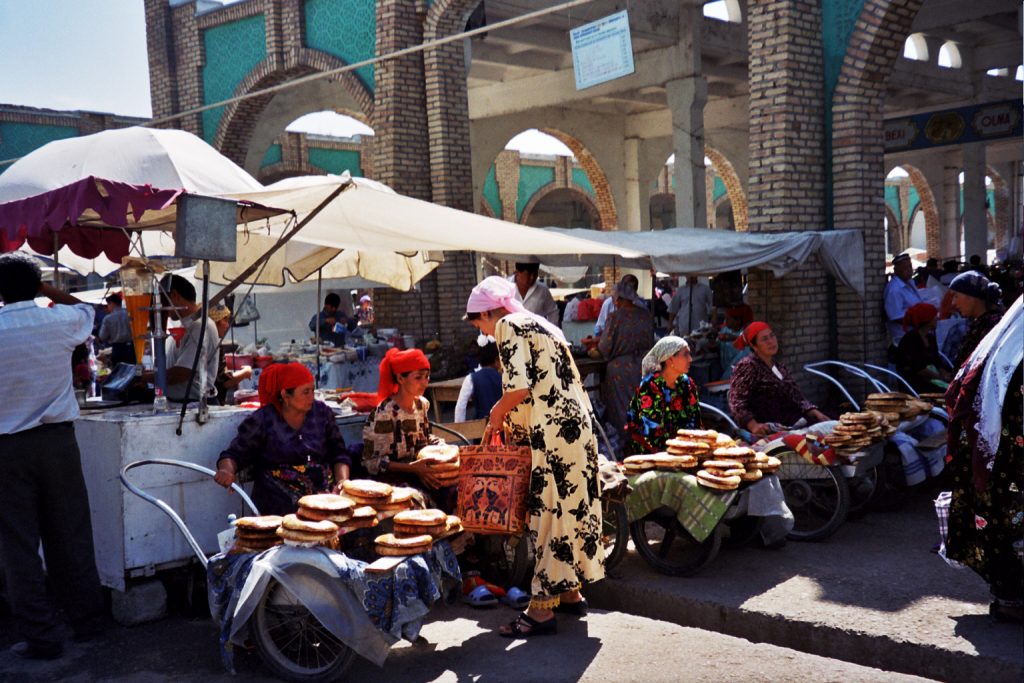The road to Shakhrisabz, a slow travel dream
2 min readIn a world where more and more people are looking for ‘slow travel’, taking the time to take pleasure in the journey as much as, if not more than the destination – in that world, a trip to ancient Shakhrisabz, Uzbekistan, would be the ultimate trip.
Only accessible via a steep mountain road forbidden to trucks and lined with market sellers, colourful against the vineyards, cotton fields and snowy summits beyond, Shakhrisabz will seduce you before you even get there.
The road to Shakhrisabz
The road to Shakrisabz has everything the slow travel lover could yearn for. It’s certainly off the beaten tourist track and it offers the chance for authentic encounters with locals at the market stalls set up along the route.
Authentic flavours are high on the slow travel wish list too, and these market sellers offer the lipsmackingly sour fermented hard cheese kurt, which should keep you going as they were once sold to those who needed to last out the caravan journey through this part of the Silk Road, known by three names, the Takhta Karacha Pass, Kitob, and Aman-Kutan.
Along the way you’ll pass the colours of the rainbow – figs, nuts, berries, spices, quilts, blankets, skies – before you’ve even reached Shakrisabz, an ancient city perched 660 m up in the valley. Samarkand is 80 km to the north, forgotten. Take in the valley view and sate your appetite over a mouthwatering shashlik meat kebab. You’re now in a different realm: known as the green or “verdant” city, and the cradle of Uzbek culture sits before you.

Unrivalled
Once a major Central Asian and Persian Empire city, Shakrisabz was founded over 2,700 years ago and boomed until its heights in the 15th century. What the UN World Heritage Convention calls “a collection of exceptional monuments and ancient quarters” bear witness to those millennia of development, trade, and competition.
The city may feel surprisingly pristine but it’s been around a long time. Temur – Amir Timur – Uzbekistan’s world famous and infamous military leader, was born here. Undefeated, brutal and a champion of the arts and architecture, his influence can be seen everywhere.
The city’s UNESCO-listed historic centre features mosques and madrassas with sumptuous blue and gold tiling typical of the Timurid style.
But perhaps most jaw-dropping is the Ak-Saray Palace. Even using captive artisan labour, this place took 24 years to build at the end of the 14th century. The mere remnants of the foundations of the bold Timurid era gates are still absolutely almighty and a welcome injection of the ancient. And, satisfyingly, even for the most ardent slow travel enthusiast, the palace is described by UNESCO as unrivalled by anything you can see in Samarkand.



